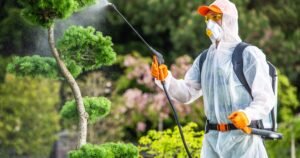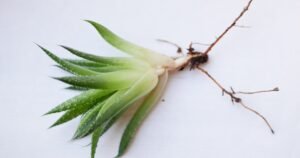Starting houseplants from seeds can be a rewarding and economical way to expand your plant collection. Here are a few easy-to-grow options:
- African Violets (Saintpaulia): These plants are well-known for their beautiful, velvety leaves and vibrant, round clusters of flowers. They prefer bright, indirect light and consistently moist soil.
- Spider Plant (Chlorophytum comosum): Known for its fast growth and unique, spider-like offspring, this plant is ideally suited for hanging baskets. It thrives in bright, indirect light and prefers to dry out between waterings.
- Peace Lily (Spathiphyllum): This plant produces elegant white spathes and is famous for its ability to purify indoor air. It prefers low to medium light conditions and evenly moist soil.
Houseplants to Grow from Seed:
- Zinnia
- Peace lily
- African violets
- English ivy
- Broccoli
- Radish
- Marigolds
- Jade plant
- Swiss cheese plant
Introduction
Growing houseplants from seeds can be a rewarding and exciting venture for plant enthusiasts. It allows you to witness the entire lifecycle of a plant, from a tiny seed to a fully grown, vibrant houseplant.
In this comprehensive guide, we will explore various houseplants that you can grow from seeds, the steps involved in the process, and essential tips to ensure success in your indoor gardening endeavor.

The Steps Involved in Growing Houseplants from Seeds
- Choosing the right seeds: Pick seeds of houseplants that are suitable for your space, considering factors such as light availability, humidity, and room temperature.
- Gathering necessary supplies: In addition to the seeds, you’ll need a suitable seed-starting mix, containers with drainage holes, and, optionally, a seed heating mat for some tropical plants.
- Planting the seeds: Fill your containers with the seed-starting mix, plant the seeds according to the package directions, and water gently.
- Proper care: Provide appropriate light and keep the soil evenly moist. Most houseplant seeds germinate in temperatures between 65 and 75 degrees Fahrenheit.
- Transplanting: Once the seedlings have grown a few true leaves, they can be carefully transplanted into larger pots.
- Ongoing care: Continue to care for your plants according to their specific needs, including watering, fertilizing, and pruning.
Growing houseplants from seeds takes time and patience, but watching your tiny seeds grow into beautiful plants can be incredibly rewarding. Remember to enjoy the process!

Benefits of Growing Houseplants from Seed
Cost-Effective:
- Main Point: Growing houseplants from seeds is often more economical than buying established plants from a nursery.
Wide Variety of Choices:
- Main Point: Starting from seeds provides a vast array of plant choices that may not be readily available as established plants.
Satisfying Experience:
- Main Point: Witnessing the entire growth process, from germination to a fully mature plant, can be immensely satisfying and educational.
Houseplants Suitable for Growing from Seed
Spider Plant (Chlorophytum comosum):
- Main Point: Spider plants are relatively easy to grow from seeds and are great for beginners. They produce offsets (baby plants) that can be potted individually.
African Violet (Saintpaulia):
- Main Point: African violets can be grown from seeds, producing beautiful, colorful flowers in a few months.
Peace Lily (Spathiphyllum):
- Main Point: Peace lilies can be grown from seeds, but they may take longer to reach maturity and bloom compared to other propagation methods.
Pothos (Epipremnum aureum):
- Main Point: Pothos plants can be propagated from cuttings or seeds. Growing from seeds provides an opportunity to experiment with different varieties.

Steps to Grow Houseplants from Seeds
Gather Materials:
- Main Point: Collect all the necessary materials, including pots or trays, potting soil, seeds, labels, and a watering can.
Prepare the Growing Medium:
- Main Point: Fill pots or trays with a well-draining, nutrient-rich potting mix suitable for the specific type of plant you are growing.
Sow the Seeds:
- Main Point: Follow the seed packet instructions for the appropriate sowing depth and spacing. Generally, lightly press the seeds into the soil and cover with a thin layer of soil.
Watering:
- Main Point: Water the soil gently but thoroughly after sowing the seeds. Ensure the soil remains consistently moist but not soggy.
Provide Optimal Light:
- Main Point: Place the pots or trays in a well-lit area, preferably with indirect sunlight, to facilitate germination and healthy growth.
Maintain Humidity and Temperature:
- Main Point: If needed, cover the pots or trays with a clear plastic dome or wrap them in plastic wrap to maintain humidity. Ensure the room temperature is suitable for germination based on the specific plant’s requirements.
Transplanting:
- Main Point: Once the seedlings have grown sufficiently, transplant them into larger pots with well-draining soil, providing ample space for growth.
Tips for Successful Houseplant Seed Germination
Follow Seed Packet Instructions:
- Main Point: Each plant species has specific germination requirements. Adhere to the instructions provided on the seed packet for optimal results.
Label Your Plants:
- Main Point: Keep track of the plants you sow by labeling them with the date of sowing and the plant’s name. This helps in monitoring growth and identifying different species.
Provide Adequate Ventilation:
- Main Point: While maintaining humidity is important, ensure there is adequate ventilation to prevent fungal growth and damping off.
Use a Heat Mat for Warmth:
- Main Point: If needed, place the pots or trays on a heat mat to maintain the appropriate temperature for germination, especially for plants that require warmth to sprout.
Troubleshooting Common Problems
Poor Germination:
- Main Point: If seeds are having trouble germinating, ensure that they have the correct balance of light, temperature, and moisture. Some seeds may also require a pre-treatment like soaking or scarification.
Seedlings Stretching or Leggy Growth:
- Main Point: If seedlings become leggy or are stretching out, they may not be receiving enough light. Try moving them to a brighter location or supplementing them with grow lights.
Damping Off:
- Main Point: This is a common disease in seedlings caused by a fungus in the soil. It can be prevented by maintaining good air circulation, using sterile soil, and avoiding overwatering.
Stunted Growth:
- Main Point: Seedlings that aren’t growing well may need more nutrients. Try repotting in fresh, nutrient-rich soil, or begin feeding with diluted plant food.
Remember, growing plants from seeds can be a test of patience and persistence, but the reward of watching a tiny seed transform into a beautiful houseplant is well worth the effort. Happy gardening!
Conclusion
Houseplants to Grow from Seed is a fulfilling and educational endeavor that allows you to nurture plants from their earliest stages. It provides a sense of accomplishment and a deeper understanding of plant growth. By following the appropriate steps and considering the specific needs of each plant, you can successfully grow a variety of beautiful houseplants, enhancing the greenery and vitality of your indoor space.
FAQs
What is the fastest seed to plant?
The fastest seed to plant is the radish (Raphanus sativus).houseplants to grow from seed Radishes are often recommended for beginner gardeners due to their rapid growth rate. Once sown, radish seeds can germinate within just a few days and reach maturity within four to six weeks, providing swift gratification for your gardening efforts. However, remember that speed shouldn’t be the only factor in choosing what to grow. Consider your personal preferences, available resources, and the specific needs of each plant.
What are the best plants to grow from seed to sell?
Succulents, herbs, and flowering plants like marigolds, sunflowers, and houseplants to grow from seed or petunias are popular choices for growing to sell. They’re relatively easy to cultivate from seeds, have a high yield, and enjoy wide appeal. Moreover, unique and rare varieties of succulents and houseplants can command higher prices, presenting a profitable venture for green-thumbed entrepreneurs.
Which houseplants grow the fastest?
The Pothos (Epipremnum aureum) is known for its fast growth rate. Its vine-like structure can grow several meters under suitable conditions, with new leaves sprouting frequently. The Spider Plant (Chlorophytum comosum) and the Peace Lily (Spathiphyllum) also exhibit swift growth, providing an instant green boost to your indoor space. However, the growth rate can vary depending on factors such as light, temperature, and nutrition.
What is the easiest houseplant to grow from seed?
The Spider Plant (Chlorophytum comosum) is considered one of the easiest houseplants to grow from seed. These robust plants are resilient, houseplants to grow from seed, adaptable to varying light conditions, and able to thrive in a range of indoor environments. They germinate quickly and are prolific growers, making them ideal for beginners eager to experience the gratification of successfully growing a houseplant from seed.











